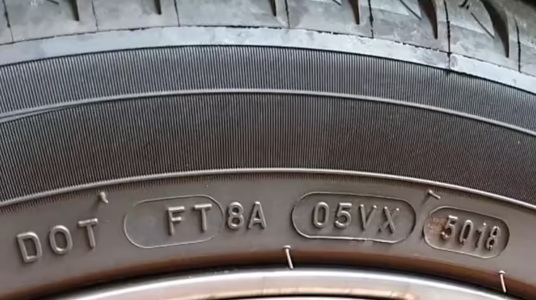When buying new tyres for your vehicle, most people only look at the brand, size, and price. However, one of the most important factors often ignored is the manufacturing date of the tyre. Knowing this date helps you understand the tyre’s age, which directly affects its safety, performance, and lifespan. Even an unused tyre can degrade over time due to exposure to heat, sunlight, and storage conditions. Therefore, identifying the tyre manufacturing date is a must for every vehicle owner.

Why Tyre Manufacturing Date Matters
- Safety: Older tyres may harden and lose grip, increasing the risk of accidents.
- Performance: A fresh tyre offers better handling, braking, and mileage.
- Durability: Tyres older than 5–6 years can develop cracks and wear faster.
- Purchase Decision: Unscrupulous sellers may pass off old stock as new if you don’t check the date.
Where to Find the Tyre Manufacturing Date
The tyre’s manufacturing date is printed on the sidewall of the tyre as part of the DOT code (Department of Transportation code). This alphanumeric code contains information about the tyre brand, factory location, and most importantly, the production date.
How to Read the Tyre Manufacturing Date
The date is usually a four-digit number at the end of the DOT code.
- The first two digits indicate the week of manufacture.
- The last two digits indicate the year of manufacture.
For example:
- DOT XXXX XXXX 3522
- 35 → 35th week of the year
- 22 → Year 2022
- This means the tyre was manufactured in the 35th week of 2022 (around late August).
Older Tyres (Before 2000)
For tyres manufactured before 2000, the DOT code had only three digits. For example:
- 237 → 23rd week of 1997.
However, most tyres today follow the four-digit format.
Tips to Identify and Judge Tyre Age
1. Check for Freshness: Ideally, a new tyre should be less than 6 months old from the manufacturing date.
2. Beware of Old Stock: Sellers sometimes keep tyres in warehouses for years. Always cross-check the date before buying.
3. Don’t Use Tyres Older Than 5 Years: Even if the tread looks fine, the rubber may have lost elasticity.
4. Look for Visible Signs of Ageing: Cracks, fading color, or hard rubber texture may indicate an old tyre regardless of the date.
Factors Affecting Tyre Shelf Life
- Storage Conditions: Heat and direct sunlight reduce tyre life.
- Usage Frequency: Tyres not used for years can still degrade.
- Climate: Hot and humid regions accelerate tyre ageing.
- Quality of Rubber: Premium brands often have better shelf life.
Common Mistakes to Avoid
- Assuming tread depth = tyre freshness: A tyre can look unused but still be 3–4 years old.
- Not checking all tyres: Make sure each tyre has a similar manufacturing date.
- Buying without DOT code: Never purchase tyres that don’t have a clear manufacturing date marking.
Final Thoughts
Identifying the manufacturing date of a tyre is simple yet crucial. The DOT code on the sidewall tells you exactly when the tyre was produced. As a rule of thumb, always prefer tyres that are less than 6 months old when purchasing, and replace them after 5–6 years even if they appear fine. By doing this, you ensure better safety, longer performance, and complete value for your money.